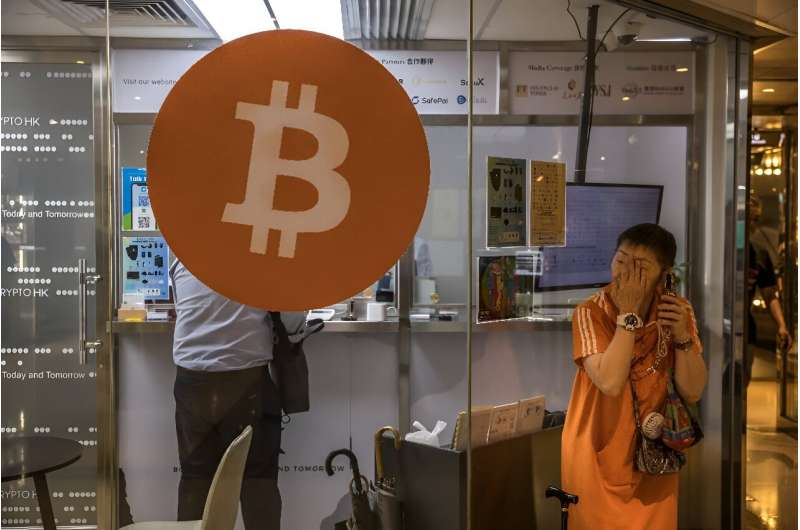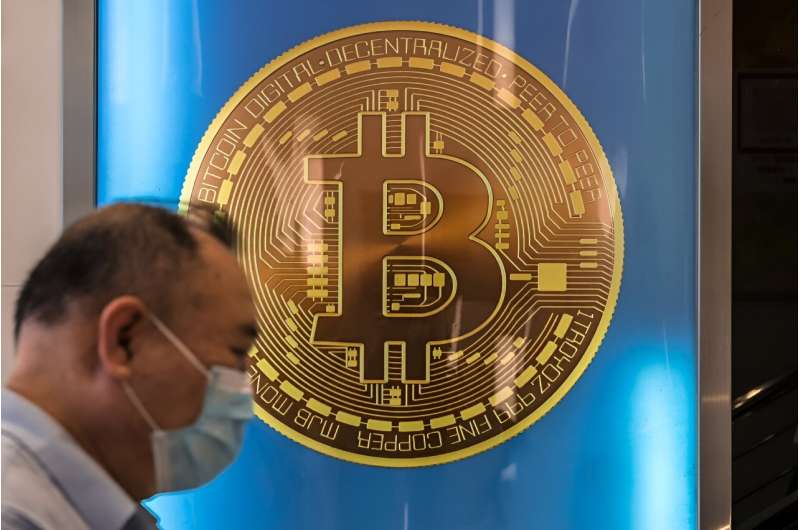
The bitcoin market on Friday engineered the "halving" of the reward for operating the cryptocurrency, a much-anticipated step designed to limit production and boost the digital money.
"The 4th #Bitcoin halving is complete!," announced cryptocurrency exchange Binance on X, the former Twitter.
"The countdown has been reset—see you in 2028."
Bitcoin is created as a reward when computers solve complex puzzles to decide which miner wins the privilege to validate the block—and receive the reward in bitcoins.
However, since the digital currency's launch in 2009, the reward has been halved for every 210,000 blocks in a process called halving.
With one block validated roughly every ten minutes, this critical industry event occurs just under every four years.
The reward, which was fixed since May 2020 at 6.25 bitcoins per new block, has now fallen to 3.125 bitcoins.
Bitcoin was conceived in 2008 by a person or group writing under the pseudonym Satoshi Nakamoto.
The halving process slows the rate at which new bitcoins are created, thereby restricting supply.
The reward amount has been trimmed over time, via halving, to implement Nakamoto's overall global limit of 21 million bitcoins.
But this ceiling is due to be reached by 2040.

Controlling supply
"The primary purpose of halving is to control bitcoin's supply," City Index analyst Matthew Weller said in a research note ahead of the event.
"By slowing the rate at which new bitcoins are created, halving helps to maintain scarcity and potentially increase the cryptocurrency's value, assuming demand remains steady or increases," he added.
The price of bitcoin has blazed a record-breaking trail on the prospect of reduced supplies, as well as big moves toward greater trading accessibility.
Bitcoin has rocketed by 50 percent in value since the start of the year, climaxing last month at a record $73,797. Prices have fallen in recent days.
"This is the first time that bitcoin beat the previous historical record before the halving has even taken place," said eToro analyst Simon Peters, noting there had been a pullback in recent days.
Commercial bitcoin mining companies operate thousands of computers in huge hangers or warehouses, consuming large amounts of electricity at a vast cost.
Halving therefore represents a major survival test for such companies because it slashes their main income source.
Reduced margins
Faced with the prospect of reduced margins, bitcoin players have invested heavily in cutting-edge new computers, in tandem with an efficiency drive which in particular seeks to slash energy costs.
In addition, some mining companies will have to "turn off some of their machines to cut costs, which equates to fewer bitcoins being created," said Manuel Valente, founder of cryptoasset investment group Coinhouse.
"And if the price of bitcoin goes down, their profitability decreases" further, he told AFP.
Halving therefore exposes the weakest bitcoin mining firms, and could potentially spark a fresh wave of sector consolidation in a survival of the fittest, commentators say.
At around 0030 GMT, after the halving had taken place, the price of bitcoin was up 0.7 percent at $63,467.46.
© 2024 AFP
Citation: 'Halving' arrives for bitcoin miners (2024, April 20) retrieved 20 April 2024 from https://techxplore.com/news/2024-04-halving-bitcoin-miners.html
This document is subject to copyright. Apart from any fair dealing for the purpose of private study or research, no part may be reproduced without the written permission. The content is provided for information purposes only.
